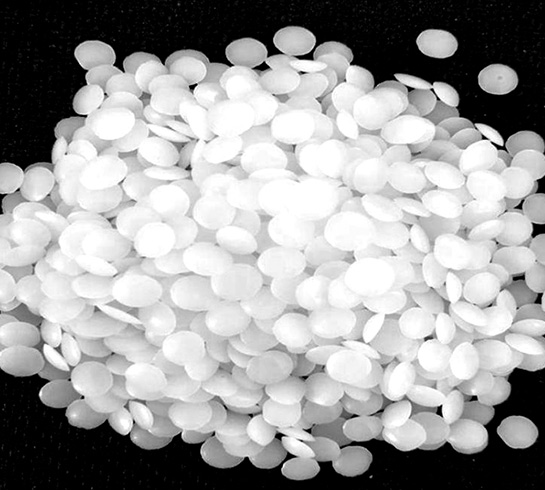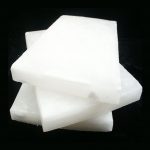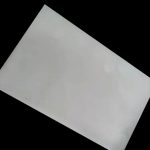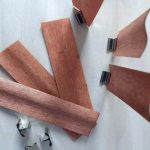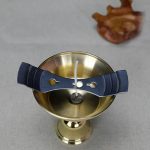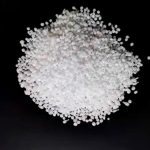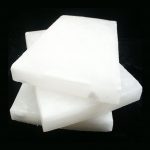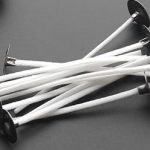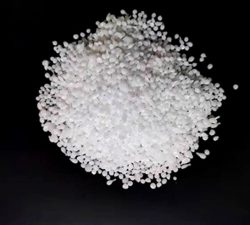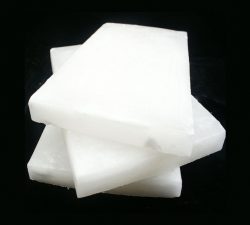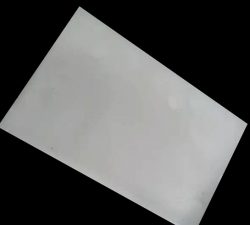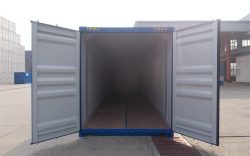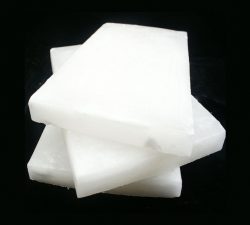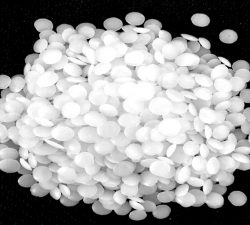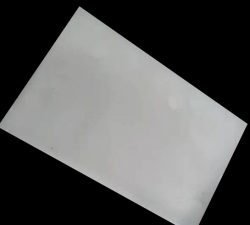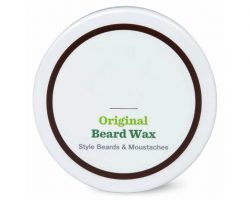Fischer-Tropsch Wax
The Fischer Tropsch wax, also called FT wax, with a high melting point (generally higher than 85°) is mainly composed of linear, saturated high-carbon alkanes with a relative molecular mass of 500-1000, which gives this chemical a fine crystal structure, high melting point, and narrow melting point range, low oil content, low penetration, low mobility, low melt viscosity, hardness, wear-resistance, and high stability.
Fischer tropsch wax can be used in plastic processing, such as injection molding, extrusion, and pelletizing industries. In the production process of masterbatch and modified plastics, Fischer Tropsch wax contributes to the dispersion of fillers and excellent smoothness during mixing. FT wax can be used as an external lubricant for PVC. The low viscosity can increase the production speed of the product. Fischer tropsch wax can help the dispersion of pigments and fillers during mixing. FT wax is especially useful in the extrusion of high-viscosity systems. Fischer Tropsch wax is more than ordinary PE wax. 40-50% less, and can significantly improve the surface gloss of the product (in terms of gloss, it can replace carnauba wax). When using intense colors, the melted Fischer Tropsch wax can effectively wet the dye and reduce the extrusion viscosity.
As a professional industrial wax manufacturer, Myerswax provides high-quality Fischer tropsch wax all over the world.
Fischer Tropsch Wax Features
Fischer tropsch wax has a fine crystal structure. As one of the Fischer tropsch wax suppliers, our FT wax also has the characteristic of high melting point, narrow melting point range, low oil content, low permeability, low fluidity, low melt viscosity, high hardness, wear resistance, and high stability.
Fischer Tropsch Wax Specifications
Testing Method
Specification
Method
PHYSICAL STATE(25℃)
Solid
COLOUR
White
VISUAL
CONGEALING POINT
93-96(℃)
ASTM D-938
DROP MELTING POINT
105-109(℃)
ASTM D-127
SOFTENING POINT
101-106(℃)
ASTM D-36
NEEDLE PENETRATION 25℃
2.5( dmm )Max
ASTM D1321
NEEDLE PENETRATION 43℃
7(dmm)Max
ASTM D1321
VISCOSITY 140℃
30(cPs/mPas)Max
ASTM D3236
Fischer Tropsch Wax Uses
Fischer Tropsch wax can be used in plastic processing, such as injection molding, extrusion and pelletizing industries. Can be used as an external lubricant for PVC. Besides, Fischer-Tropsch wax can be applied in other scenarios as follows.
Hot melt adhesive (e.g. increased crystallinity, viscosity reducer)
Plastic processing (e.g. lubricant for PVC, nucleation agent for EPS, dispersant for pigments and fillers, processing aid for rubber)
Printing ink (e.g. wear-resistant, anti-blocking agent)
Coatings (such as scratch resistant, extinction agent, powder coating processing additives)
Industrial emulsion (e.g. sewing yarn lubricant, sizing agent)
Cosmetics (such as lipstick hardening, paste oil, makeup dispersant)
Polishing agent (e.g. dry light emulsion, solvent-based system)
Wax compounds and candle additives (e.g. dye dispersant, hardening)
Fischer Tropsch Wax Composition
Fischer waxes are methylene polymers, alkanes synthesized from hydrocarbon-based syngas or natural gas. The Fischer-Tropsch process was originally used to synthesize substitutes for petroleum products. Fischer Tropsch wax is composed of 90~95% of conventional paraffins, and the rest are tertiary hydrocarbons and methyl hydrocarbons with branched chains at the ends of the molecules.
Fischer-Tropsch synthesis refers to the production process of combining carbon monoxide and hydrogen with a unique catalyst under high pressure to synthesize alkanes. According to the requirements of downstream products (such as fuel, lubricating oil, wax), the FT process can synthesize alkanes with different chain lengths and separate the alkanes by distillation.
Fischer-Tropsch wax has the characteristics of high melting point, low viscosity and high hardness, and has excellent performance in many application fields
Fischer-Tropsch waxes have better electrical properties, higher melting points and hardness, and narrower cuts than paraffin waxes. The molecular weight of the final product can be changed as required, thereby obtaining monomer hydrocarbons such as liquid paraffin, and obtaining high melting point wax such as polyethylene wax, which has special properties that other natural waxes or other synthetic waxes do not have.
FT Wax VS PE Wax
1. FT wax has much lower molecular weight than PE wax, and branched also less, high crystallinity, easily permeable high viscosity macromolecular chains and significantly reduced melt viscosity, with small migration in post-treatment and significant lubrication effect.
2. FT wax can be saturated straight chain alkane with no double bonds, strong antioxidant ability and good weather resistance.
3. The viscosity of Fischer tropsch wax is much lower than that of PE wax. Only about 10 or so. The same lubrication effect can be achieved with less amount. The amount of PE wax used was only 70-80%.
FT Wax Packaging and Storage
As one of the most professional fischer tropsch wax suppliers, we offer 50kgs woven bag and 25kgs carton with plastic waterproof outer lining, Store indoors to isolate the influence of sunlight and temperature on fischer tropsch wax.
